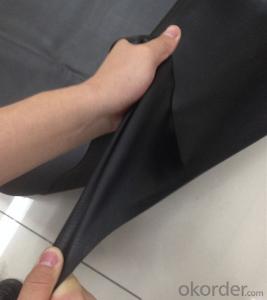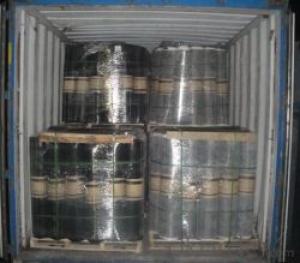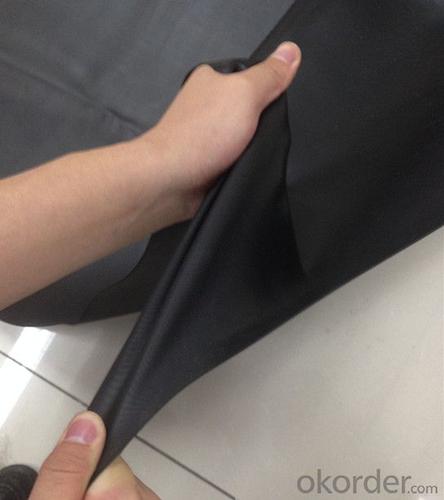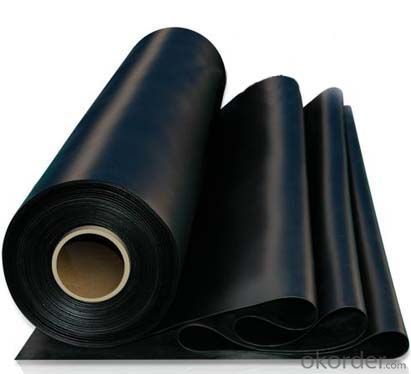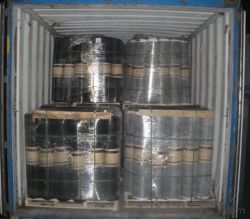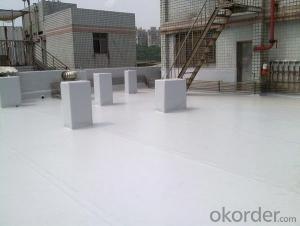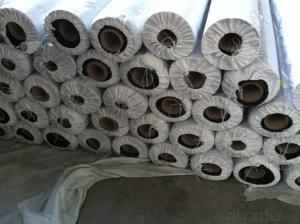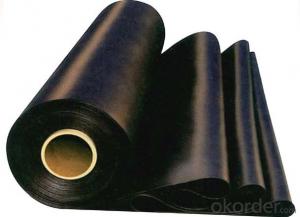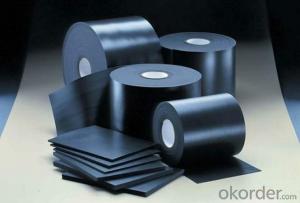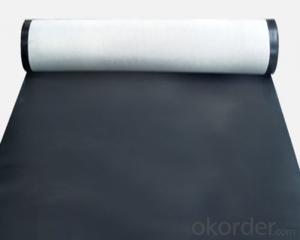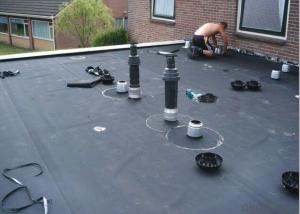Vulcanized EPDM Rubber Roofing with CE certifaction
- Loading Port:
- Qingdao
- Payment Terms:
- TT or LC
- Min Order Qty:
- 3000 m²
- Supply Capability:
- 250000 m²/month
OKorder Service Pledge
OKorder Financial Service
You Might Also Like
Black Vulcanized EPDM Rubber Waterproof Roofing System
Product Instruction of Black Vulcanized EPDM Rubber Waterproof Membrane:
Durability and ease of installation are two of the key reasons . Single ply EPDM Roof systems are becoming commonplace in today flat roofing market. EPDM membrane is a flexible rubber material available in 45 mil, 60 mil and 90 mil thicknesses. With its superior flexibility, resistance to fire and high strength, EPDM can be applied in all sorts of climates.
1. EPDM waterproof membrane is made from ternary ethylene-propylene rubber, which is for waterproofing of exposed and non-exposed applications.
2. CNBM EPDM waterproof membrane production adopts the world-advanced equipment of cold feeding extrusion and continuous vulcanization technology.
3. EPDM waterproof membrane is of high elasticity among high polymer waterproof materials and a world-popular waterproofing material.
Product Features of Black Vulcanized EPDM Rubber Waterproof Membrane:
-Excellent weather-ability, durability and size stability
-Good adaptability to high and low temperature, UV resistant and anti-corrosion
-High tensile strength and good elongation, accommodating to structure movement
-Easy installation, solid joint, and mo environmental pollution
-Good rooting penetration resistance
-Service life up to 50 years
Applications of Black Vulcanized EPDM Rubber Waterproof Membrane:
-Roof, basement, tunnel, pond liner, dam
-Industrial and civil building waterproofing
-Geosynthetic liner for fish ponds, swimming pools, channels, irrigation system
-Especially suitable for projects with high requirement in durability, anti-corrosion and deformation
Specifications of Black Vulcanized EPDM Rubber Waterproof Membrane:
-Width of roll: 1.2m, 2m, 4m
-Length of roll: 20m, 30m or customized
-Thickness of membrane: 1.2mm, 1.5mm, 2mm
-Type: vulcanized EPDM or welding EPDM
-Application: roof, basement, pond, lake, swimming pool, steel structure roofing, underground, tunnel, etc
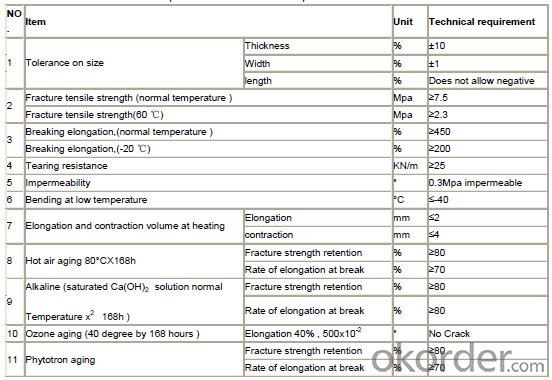
FAQ:
1. Is your EPDM waterproof membrane the real rubber?
Yes, our EPDM membrane is made from top quality rubber, which is imported from America. We support samples for testing, or testing in our factory.
2. How's your products quality?
Our EPDM is with the top quality at home and abroad. Our quality is much higher than Chinese standard. Our product is widely used in Chinese Central government projects. And it's also accpted by customers all over the world, such as EU, USA, Astrulia, etc.
3. What's the service life of your EPDM membrane?
The service life of our EPDM membrane is more than 50 years.
4.What's your MOQ?
Our MOQ is 3000M2.
5. What's your product ability of EPDM membrane?
We own the largest EPDM production line in China. Our product ability of EPDM membrane reaches 2 million square meter per year.
Photos of Black Vulcanized EPDM Rubber Waterproof Membrane:
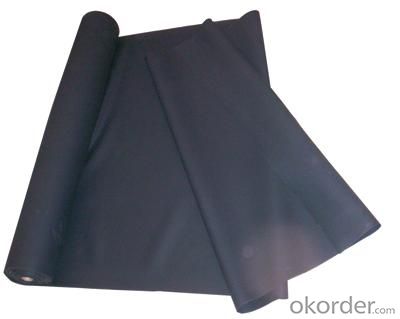
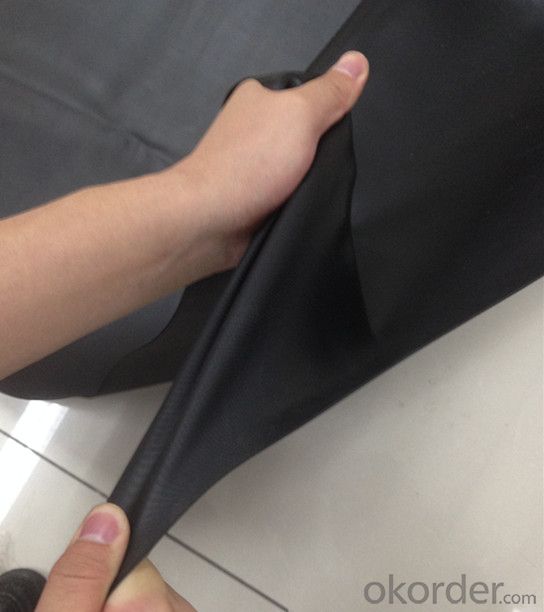
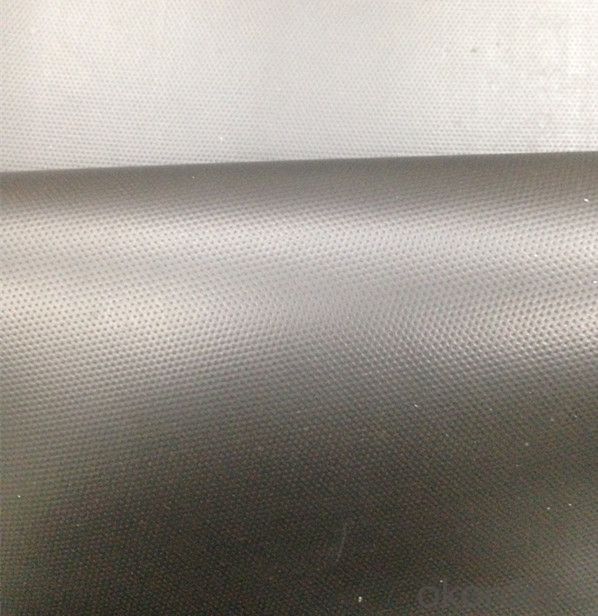
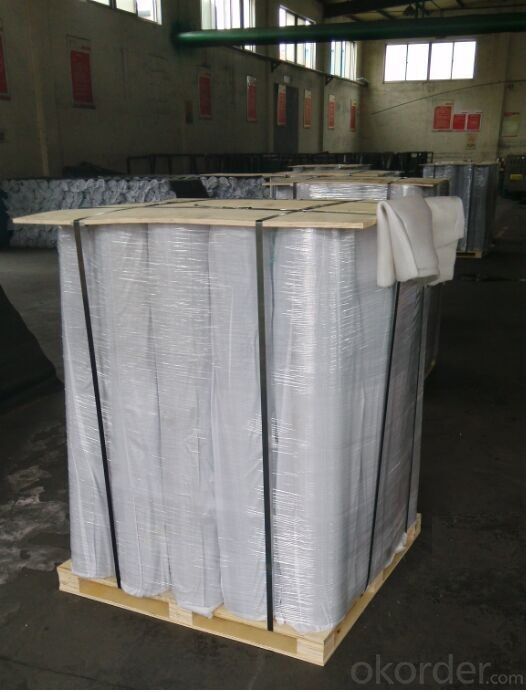
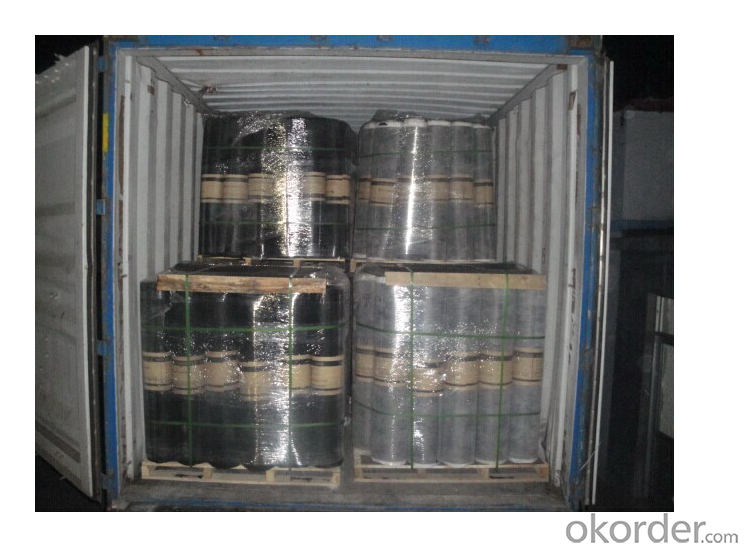
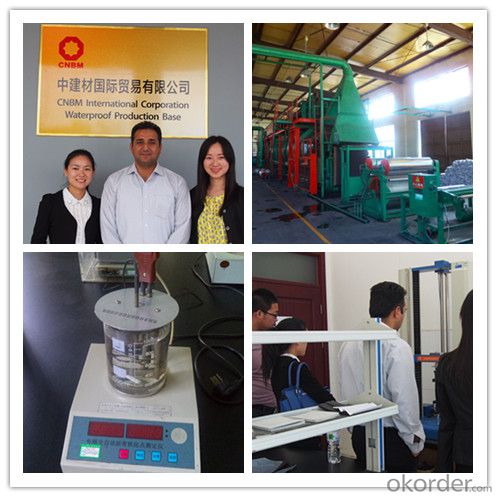
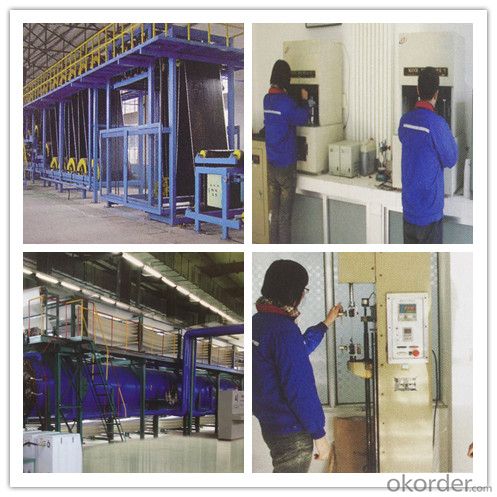
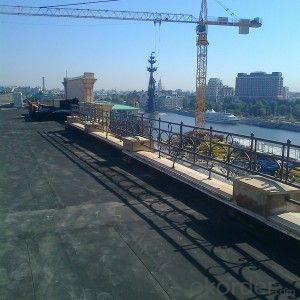
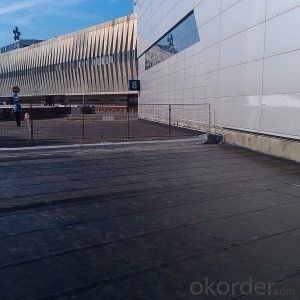
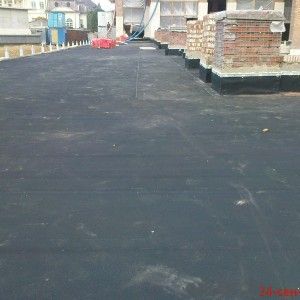
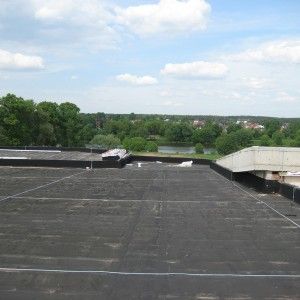
- Q: Can a waterproofing membrane be used in residential buildings?
- Yes, a waterproofing membrane can indeed be used in residential buildings. In fact, it is highly recommended as it provides an effective barrier against moisture, preventing water damage and mold growth. Waterproofing membranes are commonly used in areas prone to water exposure such as basements, bathrooms, roofs, and balconies. They are typically applied on the exterior or interior surfaces, creating a protective layer that prevents water infiltration. This helps to maintain the structural integrity of the building, extend its lifespan, and enhance the overall comfort and safety of the residents. Therefore, using a waterproofing membrane in residential buildings is a wise investment to protect against potential water-related issues.
- Q: Can a waterproofing membrane be used for a roof deck?
- Yes, a waterproofing membrane can be used for a roof deck. A waterproofing membrane is designed to provide a protective barrier against water penetration, making it an ideal solution for roof decks that are exposed to rain, snow, and other weather elements. The membrane is typically applied on top of the roof deck surface, creating a seamless and durable waterproof layer that prevents water from seeping into the underlying structure. This helps to extend the lifespan of the roof deck and protect it from potential water damage. Additionally, some waterproofing membranes also offer additional benefits such as UV resistance and thermal insulation, further enhancing their suitability for roof deck applications.
- Q: Can a waterproofing membrane be used for loading docks or ramps?
- Yes, a waterproofing membrane can be used for loading docks or ramps. A waterproofing membrane is designed to protect surfaces from water damage by creating a barrier that prevents water from seeping through. Loading docks and ramps are exposed to various weather conditions and can be prone to water infiltration, which can cause damage over time. Applying a waterproofing membrane to these surfaces can help to prevent water penetration, protecting the structure and increasing its lifespan. Additionally, a waterproofing membrane can also provide added benefits such as slip resistance, protecting against chemical spills, and reducing maintenance costs.
- Q: Can waterproofing membranes be used on metal roofs?
- Indeed, it is possible to utilize waterproofing membranes on metal roofs. When it comes to safeguarding and sealing roofs, including metal ones, waterproofing membranes are frequently favored. These membranes are specifically engineered to serve as a barrier against water infiltration, thereby safeguarding the roof's structure and preventing any potential leaks. They can be directly applied to the metal roof surface, creating an impervious seal that is resistant to moisture, UV rays, and other environmental elements. By implementing waterproofing membranes, the lifespan of metal roofs can be considerably prolonged, as they effectively prevent rust and corrosion, while also boosting energy efficiency by minimizing heat transfer. Consequently, applying waterproofing membranes on metal roofs represents a practical and successful approach to ensure both durability and longevity.
- Q: Can a waterproofing membrane be installed on vertical surfaces without sagging or slumping?
- Vertical surfaces can have a waterproofing membrane applied to them without experiencing sagging or slumping. The market offers specific waterproofing membranes that are designed to stick to vertical surfaces and maintain their shape and strength. These membranes are typically made of materials with higher viscosity, enabling them to adhere to vertical surfaces and resist sagging or slumping. Some membranes may even include reinforced layers or mesh to provide additional support and prevent sagging or slumping. Proper installation techniques, including ensuring the surface is clean and dry, using suitable adhesives, and following manufacturer guidelines, are crucial to ensuring the waterproofing membrane adheres correctly and does not sag or slump.
- Q: Can a waterproofing membrane be used on TPO roofs?
- Yes, a waterproofing membrane can be used on TPO roofs. TPO (Thermoplastic Olefin) roofs are known for their durability and resistance to various weather conditions, but adding a waterproofing membrane can provide an extra layer of protection against water infiltration and enhance the overall longevity of the roof.
- Q: Are waterproofing membranes resistant to saltwater corrosion?
- Yes, waterproofing membranes are generally resistant to saltwater corrosion. They are specifically designed to provide a protective barrier against water and moisture, including exposure to saltwater. These membranes are typically made from materials that resist corrosion, such as synthetic polymers or bitumen, which can withstand the corrosive effects of saltwater. Additionally, waterproofing membranes are often reinforced with additives or coatings that enhance their resistance to corrosion. However, it is important to note that the level of resistance may vary depending on the specific type and quality of the membrane used. It is advisable to consult with professionals or manufacturers to ensure that the chosen waterproofing membrane is suitable for saltwater environments.
- Q: Does a waterproofing membrane require any special considerations for installation in earthquake-prone areas?
- Yes, a waterproofing membrane does require special considerations for installation in earthquake-prone areas. In such areas, it is crucial to ensure that the membrane is not only resistant to water infiltration but also able to withstand the potential movement and shaking caused by earthquakes. The installation process should include additional measures such as proper anchoring, reinforcing, and flexible joint systems to enhance the membrane's ability to withstand seismic activity and prevent water damage in the event of an earthquake.
- Q: Can a waterproofing membrane be used on tunnels with lighting systems?
- Yes, a waterproofing membrane can be used on tunnels with lighting systems. The membrane can effectively protect the tunnel structure from water infiltration while allowing the lighting system to function properly.
- Q: Is a waterproofing membrane environmentally friendly?
- Indeed, an environmentally friendly aspect can be attributed to a waterproofing membrane. These membranes are formulated with the purpose of averting water leakage and structural harm, thereby contributing to the durability of a building and reducing the necessity for repairs or replacements. Consequently, construction waste and the overall environmental impact of the building industry may be diminished. Additionally, certain waterproofing membranes are crafted using eco-friendly materials, such as recycled content or bio-based substances, thus aiding in the reduction of the carbon footprint associated with their manufacturing process. Moreover, these membranes can be engineered to be recyclable or biodegradable, further lessening their environmental impact once they reach the end of their life cycle. Furthermore, through the prevention of water infiltration, waterproofing membranes are able to safeguard the structural integrity of buildings, preventing issues related to moisture, such as the growth of mold and rot. This, in turn, helps maintain a healthy indoor environment and diminishes the need for energy-intensive remediation measures. Nevertheless, it is crucial to accurately evaluate the environmental friendliness of a waterproofing membrane by considering its specific characteristics and certifications. Look for certifications such as LEED (Leadership in Energy and Environmental Design) or products that have undergone life cycle assessments to ensure that they meet rigorous environmental standards. To summarize, although not all waterproofing membranes may inherently possess environmental friendliness, the utilization of certain materials and the prevention of water damage can render them a sustainable choice for building projects.
Send your message to us
Vulcanized EPDM Rubber Roofing with CE certifaction
- Loading Port:
- Qingdao
- Payment Terms:
- TT or LC
- Min Order Qty:
- 3000 m²
- Supply Capability:
- 250000 m²/month
OKorder Service Pledge
OKorder Financial Service
Similar products
Hot products
Hot Searches
Related keywords
